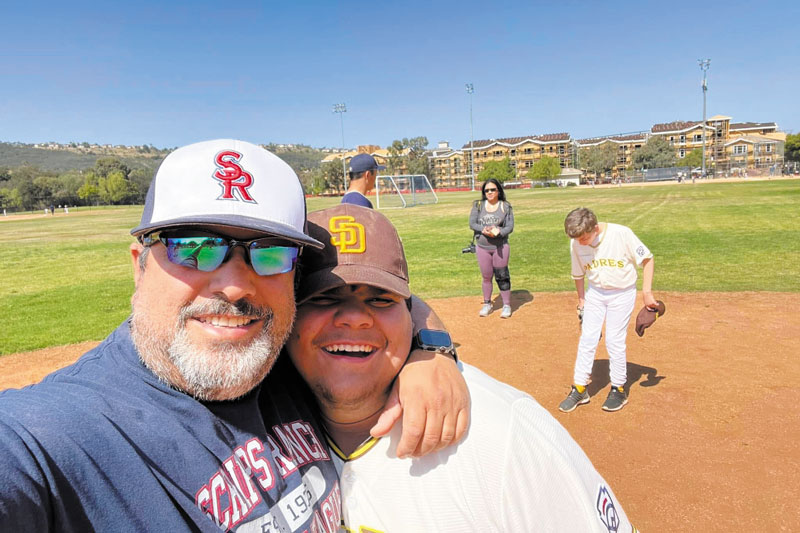
Challenger program hits a homerun
By Terry L. Wilson
Scripps Ranch resident John Aguilar works for the San Diego Unified School District as principal at Normal Heights Elementary School. In addition, he coaches a Little League baseball team consisting of players who are all dealing with unique challenges in their lives.
“I’ve been coaching Challenger for 11 years now,” Aguilar said. “Challenger is a division in Little League that is for kids that require special assistance to accomplish physical or cognitive tasks.”
The Challenger Division was established in 1989 as a division of Little League Baseball to enable boys and girls with physical and developmental disabilities, ages 5-18, to enjoy the game of baseball along with the millions of other children who participate in this sport worldwide.
“We deal with kids that have a wide span of serious issues,” Aguilar said. “Some of my kids have played for many years. I’ve seen their growth and development along the way. Some take longer than others and that’s when our buddy system comes into play.”
The Challenger Division encourages the use of “buddies” for the Challenger players. The buddies assist the Challenger players on the field and, whenever possible, they encourage the players to bat and make plays themselves. The buddy is always nearby to help when needed.
“For the past few years, we’ve partnered up with Scripps Ranch’s high school baseball team,” Aguilar said. “They will send out the varsity or the JV team and we pair a buddy up with our kids in a one-on-situation. The buddies warm up the kids, they help them bat, help them field – the player’s buddy runs bases with them. They help the kids feel like they are real ball players. We also provide buddies for the opposing team.”
Each player gets a chance to bat. The side is retired when the offense has batted through the roster. No score is kept during games. Games last approximately three innings. The Challenger players wear the same uniforms and safety equipment as other Little League players. Teams are set up according to abilities, rather than age, and can include as many as 15-20 players.
“Sometimes we have to dial it down a little bit because some of our kids have a sensitivity to noise and crowds. We try to make it a fun experience for everyone,” Aguilar said. “Each of our players has a unique situation. Some kids progress faster than others. Sometimes it takes a season or more before some kids show improvement. In addition to baseball, we work on social skills, communication – and for some kids, it’s as simple as creating friendships.”
Coach Aguilar knows firsthand how important the Challenger program is. His son suffers from Angelman Syndrome, which has a high comorbidity with autism and shares a common genetic basis with some forms of autism.
“I got into the Challenger Program because my son, Jacob, who is now 16, has a rare condition called Angelman Syndrome,” Aguilar said. “It’s a neurological condition. He’s non-verbal so he uses an iPad to communicate. This is his 11th year in the program. Jacob loves to put on his uniform with the Padres logo. Being on the team has enhanced his social skills. In the beginning he even refused to hold a bat or to throw a ball. Now he can throw a ball and hit it off the T.”
